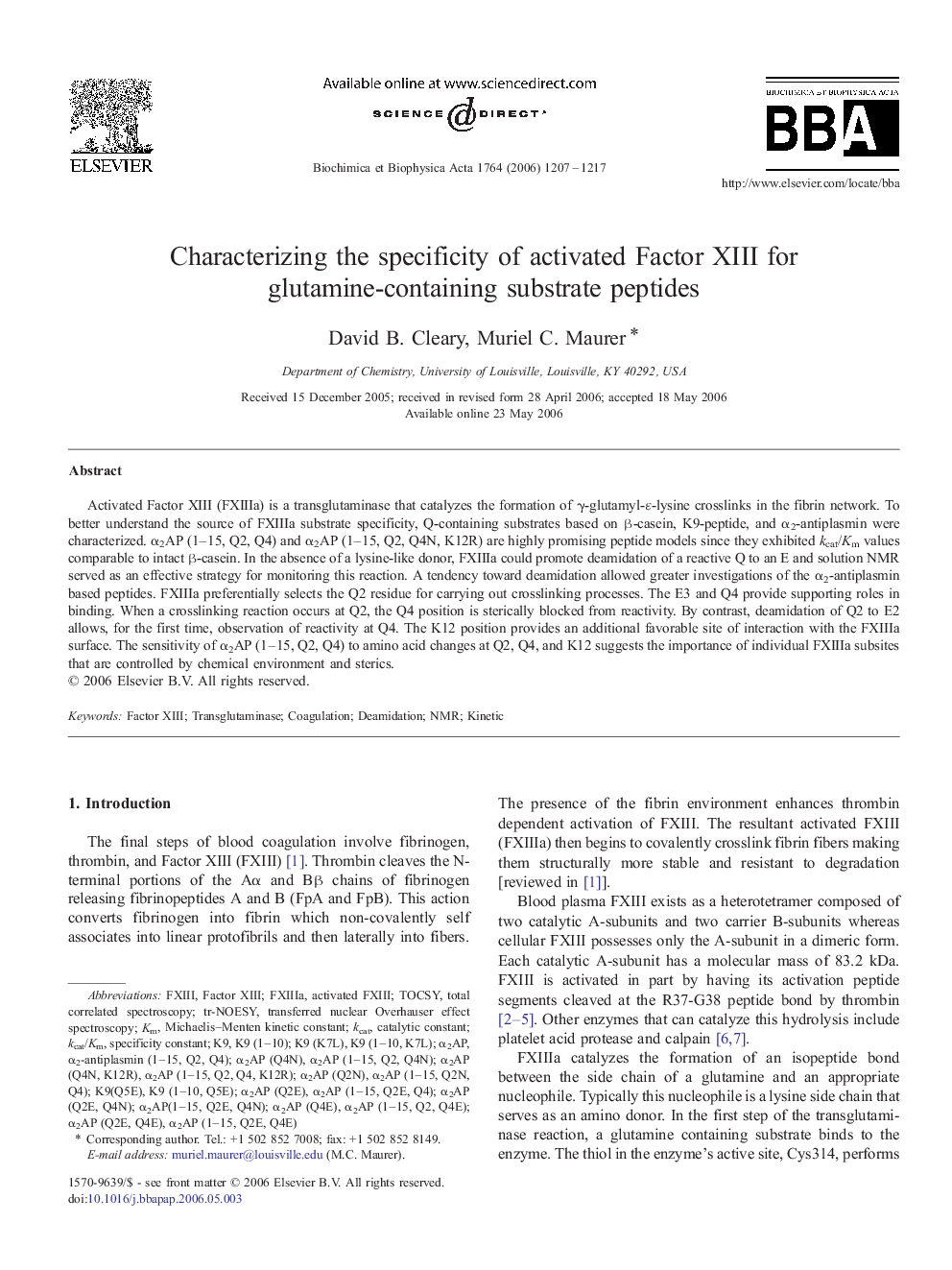| Article ID | Journal | Published Year | Pages | File Type |
|---|---|---|---|---|
| 1179671 | Biochimica et Biophysica Acta (BBA) - Proteins and Proteomics | 2006 | 11 Pages |
Activated Factor XIII (FXIIIa) is a transglutaminase that catalyzes the formation of γ-glutamyl-ɛ-lysine crosslinks in the fibrin network. To better understand the source of FXIIIa substrate specificity, Q-containing substrates based on β-casein, K9-peptide, and α2-antiplasmin were characterized. α2AP (1–15, Q2, Q4) and α2AP (1–15, Q2, Q4N, K12R) are highly promising peptide models since they exhibited kcat/Km values comparable to intact β-casein. In the absence of a lysine-like donor, FXIIIa could promote deamidation of a reactive Q to an E and solution NMR served as an effective strategy for monitoring this reaction. A tendency toward deamidation allowed greater investigations of the α2-antiplasmin based peptides. FXIIIa preferentially selects the Q2 residue for carrying out crosslinking processes. The E3 and Q4 provide supporting roles in binding. When a crosslinking reaction occurs at Q2, the Q4 position is sterically blocked from reactivity. By contrast, deamidation of Q2 to E2 allows, for the first time, observation of reactivity at Q4. The K12 position provides an additional favorable site of interaction with the FXIIIa surface. The sensitivity of α2AP (1–15, Q2, Q4) to amino acid changes at Q2, Q4, and K12 suggests the importance of individual FXIIIa subsites that are controlled by chemical environment and sterics.
